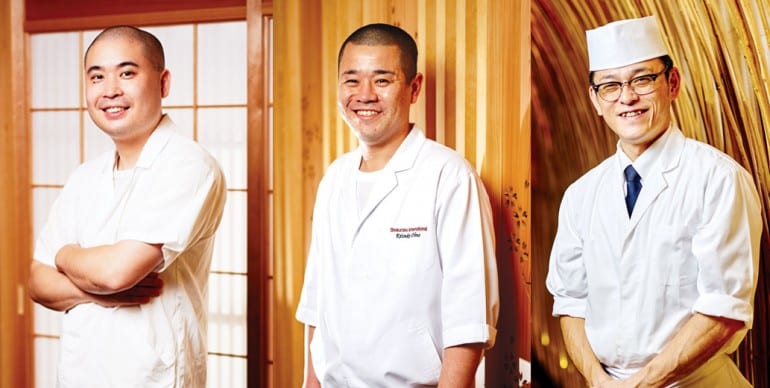It’s a simple dish using few ingredients, but the technique, heart and soul that go into preparing just one sushi is nuanced and full of depth. Here, we give you a glimpse of great masters at work.
In our previous interviews with sushi masters, we learned that in 1982, there were less than 40 Japanese restaurants in Singapore. According to the Embassy of Japan in Singapore, as of June 2015, the number of Japanese restaurants here is estimated to be 1,105 – a fraction of which is made up of sushi joints. As more and more sushi joints pop up across the island, some of them offering modern interpretations of sushi, it’s no surprise that culinarians worry the fine tradition of preparing the dish could get lost at sea. With these three venerable sushi masters, however, that fear can be put to rest.
One of them is Chef Kazuo Saito, the sushi chef of Akane at The Japanese Association, Singapore. A stickler for tradition, the humble and earnest Chef Saito has accumulated 21 years of experience mastering the craft of sushi-making, all these years refusing to pander to newfangled culinary concepts such as fusion cuisine. At the same time, he also recognises that techniques and ideas are always evolving. “The traditional methods of preparing sushi will never disappear,” affirms Chef Saito. “But because traditions are passed down through the generations, certain aspects will evolve along the way. It’s inevitable.”
We also spoke to Chef Taku Ashino, the acclaimed sushi chef of his eponymous restaurant Ashino. Chef Ashino prides himself on serving true-form edomae sushi, a tradition that dates back to 19th-century Edo (now Tokyo) involving special techniques to enhance flavours and prolong the shelf life of the fresh seafood. Some of the techniques Chef Ashino employs to honour this age-old tradition include marinating selected seafood in salt and vinegar, and sandwiching the seafood between sheets of kelp. Coupled with his precise knowledge of fish aging, chef Ashino is the very definition of a sushi master.
Last and certainly not the least, Chef Keisuke Ohno, head chef at Sushi Mieda, who uses the Niigata tradition of smoking tuna atop a bed of specially imported rice straw from the prefecture. Like Chef Ashino, Chef Ohno also ages selected seafood based on several factors – the type of fish, how it was killed, the portion, as well as its characteristics.
Over the next few pages, find out more about each sushi restaurant’s specialties, and what makes these three sushi chefs stand out from the crowd.
(Text TAN LILI Photography Raymond Toh/Vineyard Productions)
